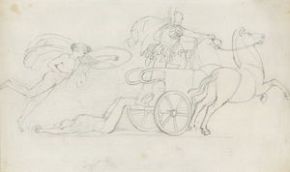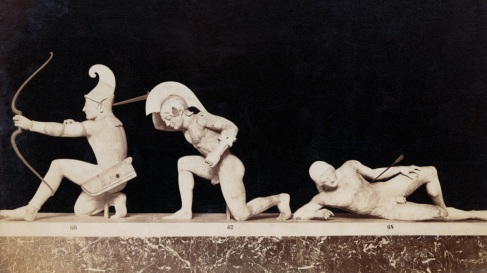The post I have most been waiting to publish throughout this entire project has finally come… It is now for me to completely rant on about how much Wolfgang Petersen’s 2004 interpretation of the Iliad, Troy, is not only horrid, but also a travesty of a great classical story.[2]
Please allow me to first state that I do not want anyone to miss understand my opinions in any way possible. Let me disclaim that I am not only a sucker for a good action movie as much as anyone else, but c’mon… What lady out there does not mind seeing Brad Pitt, Eric Bana or Orlando Bloom flashing their beautifully (wait could be they actually be god-like?) sculpted bodies? Or if you are a male viewer, there was a sex scene in the first few opening minutes of the movie…
Nonetheless, that does not make up for Petersen’s abomination of quite possibly the greatest classical story to have ever been written. Troy could have been a great epic film if it wouldn’t have been for some really disrespectful and unnecessary alterations that they did to the immortal story.
Please note: Spoilers coming!
Yes, I am talking about Menelaus being killed cowardly by Hector, or Agamemnon killed by Briseis at the end of the movie, or Achilles being the cousin of Patroclus (in fact they were close friends), or Hector killing an Argive. Also, where are the other heroes of the Iliad, Ajax, and Diodemes? More importantly, where the hell were the gods and goddesses that essentially impacted the Greek culture?
If it would not have been for these alterations to the original story, which really disturbed me (if you ever read the Iliad, you’ll understand me) and which I regard as unnecessary and as the usual Hollywood nonsense added to most American films (a good dose of machismo, exaggeration, historical inaccuracy, etc). This could have been a great film but unfortunately it is not…
To be more specific on how Petersen’s interpretation (if you can even call it an interpretation) is degrading to Homer’s tale and the Greeks, I will give you an example from Book 16.
Unlike what is seen in the horrific depiction of the epic poem in the movie Troy, within the Iliad Achilles agrees to allow his comrade, Patroklos, to wear his armor and lead the Myrmidons into battle after learning that Hektor had been rejuvenated by Apollo and was now advancing towards the Greek ships. Achilles advises his dear friend to not advance into the plain but to only drive the Trojans away from the battle ships. Therefore, giving Achilles the advantage to not engage in any battle for the Greeks due to his previous agreement made with Agamemnon.
Unfortunately after Patroklos kills Sarpedon, he forgets the warning given to him by Achilles and pursues towards the Trojans across the plain up to the city walls. While Patroklos continues his murderous rampage, Apollo urges Hektor to attack him and Apollo himself knocks down Patroklos and strips him of any armor before Hektor comes in and kills him.
Sadly, this is not how Petersen had chosen to depict the ultimate demise of Patroklos and the motivation for Achilles to enter the Trojan War on behalf of Agamemnon. Rather he decided to leave any presence of Apollo out of the battle scene and had Hektor and Patroklos battle one another willingly. Furthermore, Petersen neglected to incorporate the scene where Patroklos kills Sarpedon during the battle, hence one of the reasons why Apollo wanted Hektor to murder “Achilles.”
Full battle scene of Hektor versus Patroklos
http://www.youtube.com/watch?v=VmqjQzwZaGk
The only concept Petersen seems to have gotten right throughout the entire film was that of Greek Humanism. Pitt, Bana, Bloom, etc all enveloped the concept of physical beauty, which would make them all seem like divine heroes. Yet, that does not make me overlook the fact that Petersen had poorly interpreted Homer’s tale to the point that it is grossly insulating to anyone that has found the inner beauty in the Iliad. Personally, if my heritage had any Greek in it, I would be personally insulted by what Petersen did to a piece of literature that greatly impacted my culture. Clearly, Petersen was not one of the Westerners that the Greek culture had a profound impact on.

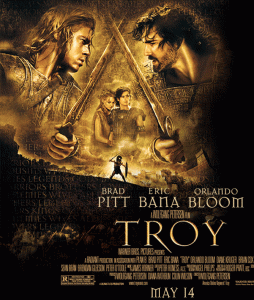
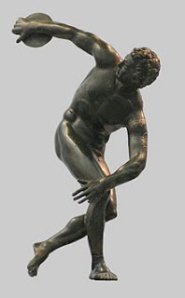
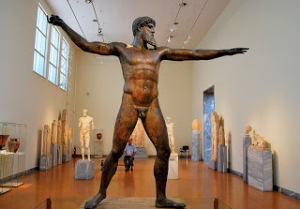
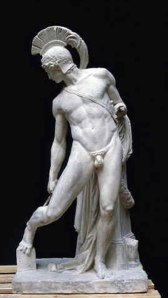
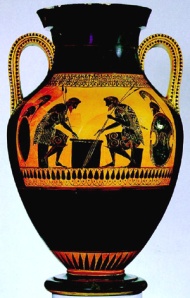
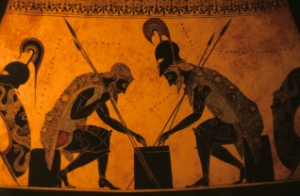
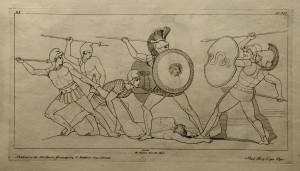
_Flaxman_Ilias_1795,_Zeichnung_1793,_188_x_344_mm.jpg)
